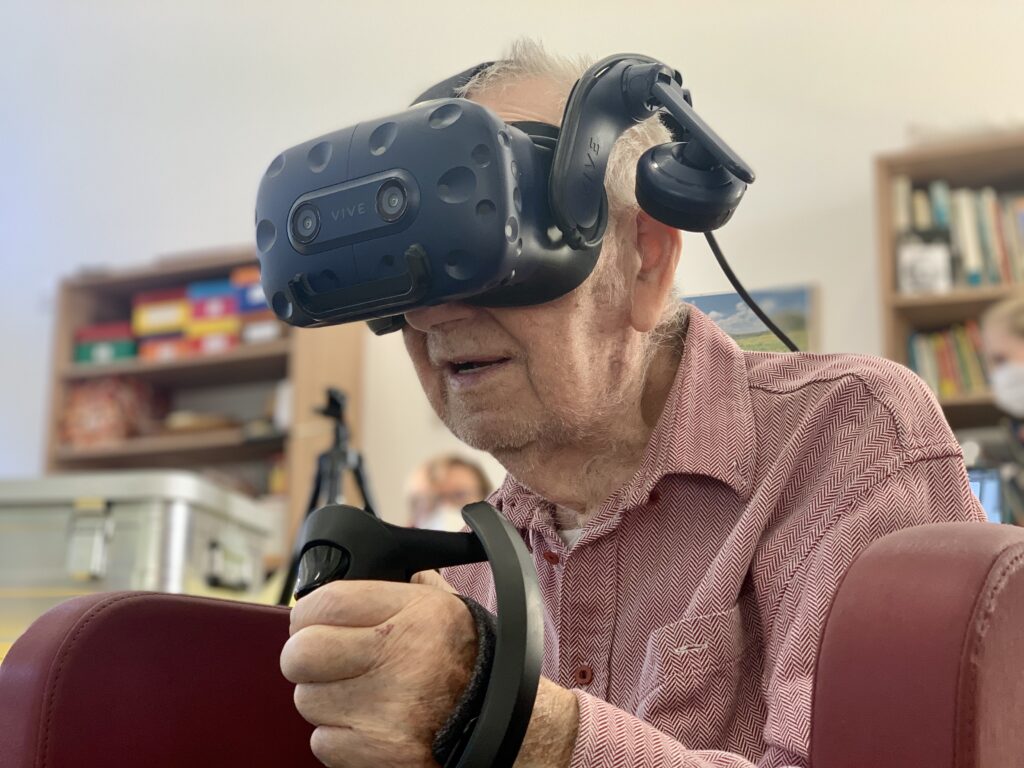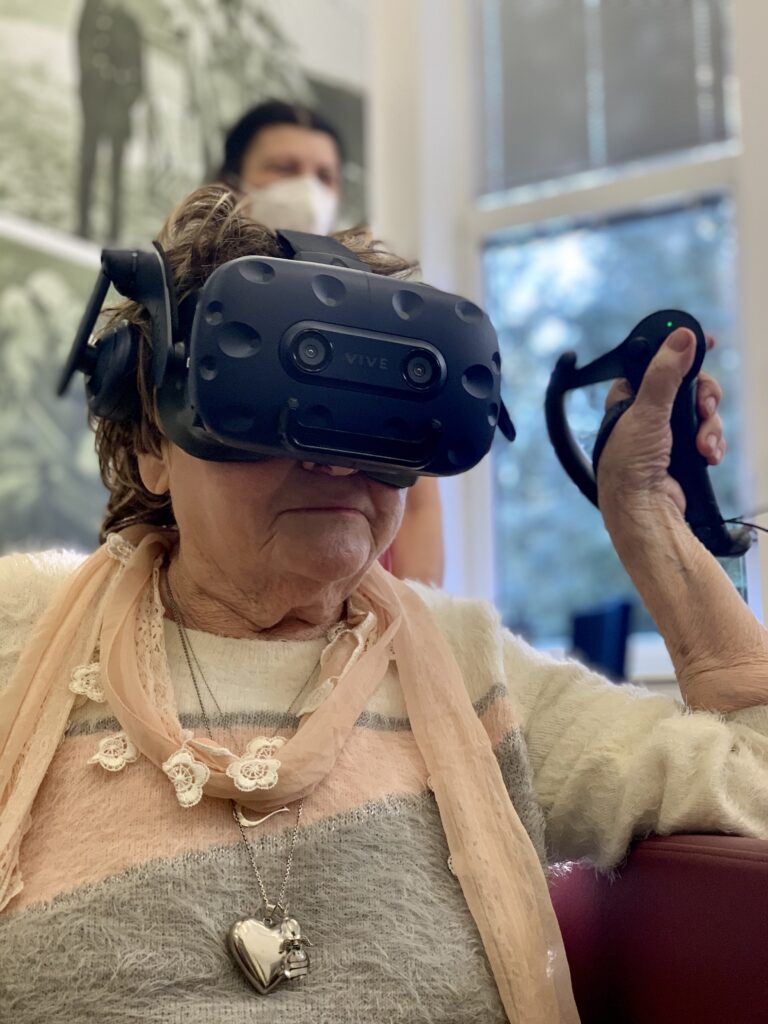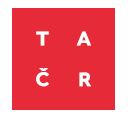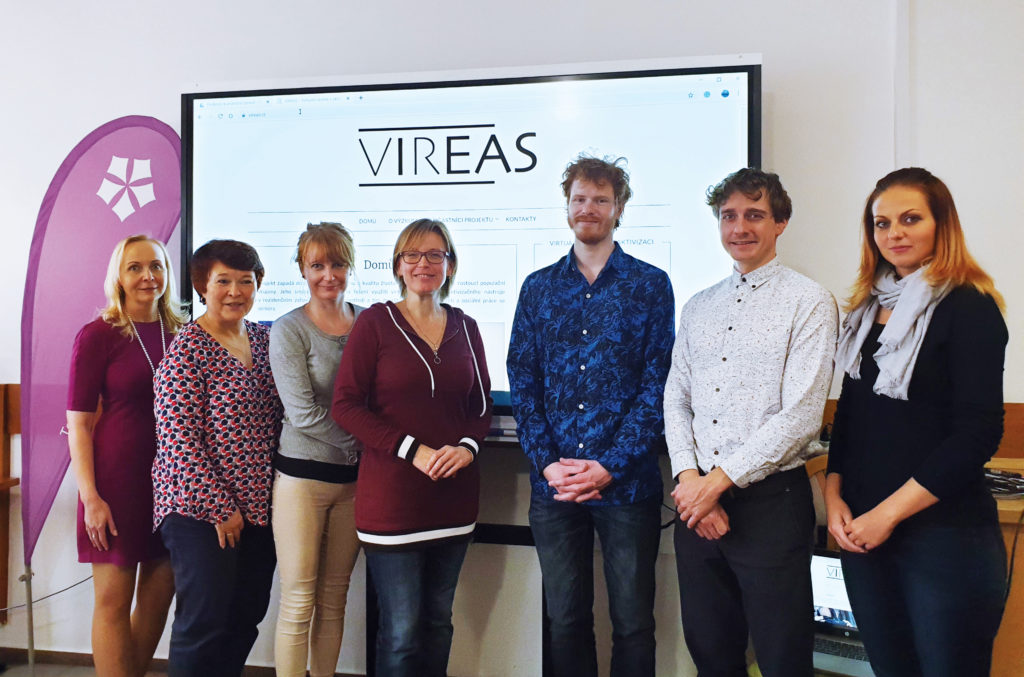The unique Czech project „Virtual reality in the activation of seniors“ (VIREAS), in which the scientists from our institute participated was concluded last year. It focused on the use of virtual reality as a means to improve the quality of social services and work with the elderly.
The project was financially supported by the Technology Agency of the Czech Republic under the Eta Programme and ran from 2019 to 2022.The main implementer was the Faculty of Theology of the University of South Bohemia in České Budějovice (TF JU), other participants were the Czech Institute of Informatics, Robotics and Cybernetics of CTU (CIIRC CTU) and the Association of Virtual and Augmented Reality. The aim of the solution was the development of a set of virtual experiences designed especially for residents of homes for the elderly and a methodology for activation workers. We have previously reported on the project on our institute’s website here, and now we have the opportunity to evaluate how the ambitious plans of the project have been fulfilled.
Studies have shown that a well-designed virtual experience can support the fulfilment of some of the key needs of older people, such as the need for dignity or continuity and meaning in their life story. „In virtual reality, a person can return to places that are connected to their family, profession or hobbies, but also see places that were inaccessible to them for financial or political reasons. In doing so, he naturally tells about his life and his values“, says Věra Suchomelová, principal investigator of the project from the Faculty of Theology of the University of South Bohemia in České Budějovice.
The development of virtual experiences required, among other things, the acquisition of hundreds of 360° images that map the entire Czech Republic. It turns out that the quality of the photos is also affected by details such as the height of the tripod. „For users – clients of homes for the elderly, who often have movement limitations, it is necessary to capture reality from a sitting position, for example, so that the result looks natural,“ adds Martin Kotek from the Association of Virtual and Augmented Reality. Thanks to the number of photographs, it was possible to put together a variety of themed trips. Seniors can thus travel not only to the countryside of interesting cities, but also focus on sports, spas, pilgrimage sites or cultural monuments, depending on their interests. A key finding of the research was also the preference for virtual environments where natural movement can be seen: people in the park, on a bike, shopping, mothers with children.

The project team also focused on creating conditions under which seniors with vision, hearing or fine motor difficulties can enjoy virtual reality. „The important role play the lighting conditions, the quality of the accompanying sound and photographs, but also the possibility of parallel control, when the senior is assisted in moving in the scene non-violently by an accompanying person, for example an activation worker“, adds Lenka Lhotská from the Czech Institute of Informatics, Robotics and Cybernetics.
In the course of the project, the researchers came to a fundamental conclusion: for the best results and improved mental health, the virtual experience must be combined with real social contacts. Věra Suchomelová summarises: „The older person must be able to share the virtual reality experience. It is possible to experience virtual reality in a group of other seniors, with an activation worker or with family. The virtual experience can be followed by an activity aimed at memory training or reminiscence. If the use of virtual reality is combined with social contact, it can undoubtedly improve the quality of life of geriatric clients.“

The objectives and outputs of the project were achieved. A set of virtual experiences has been created for future users – the elderly and the methodology Virtual Reality (not only) in Homes for the Elderly for activation workers. The methodology (in Czech) can be downloaded HERE and samples of the virtual experiences and other information can be found on the VIREAS project website.
Sample of virtual experience – Virtual reality draws seniors into the action: a walk in the virtual forest:
Project patners:

The project was financially supported by the Technology Agency of the Czech Republic under the Eta Programme




